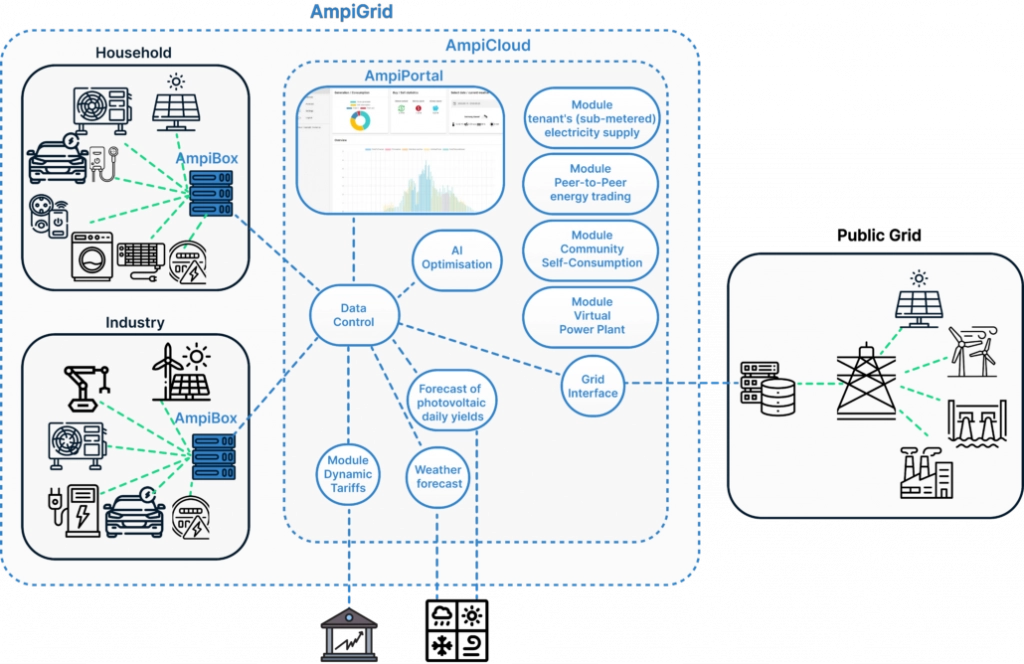Project page: AmpiGrid.de
COMMUNITY SELF-CONSUMPTION
Tenant electricity is a form of electricity supply in which electricity produced by renewable energy sources such as solar panels is supplied directly to the tenants of a building, rather than to the public grid. These systems can be located either on the roof of the building or on the property. By using tenant electricity, tenants can lower their electricity costs while helping to reduce CO2 emissions.
The AmpiGrid Portal gives both the landlord and tenant an overview of current energy production and consumption. The energy is distributed in a fair and efficient way, resulting in financial benefits for both parties.
INTELLIGENT ENERGY MANAGEMENT SYSTEM
By using intelligent energy management systems, energy consumption can be monitored and optimized. This leads to lower electricity costs and reduced environmental impact. Systems with high loads, such as the solar plant, the heat pump and the electric car, can be connected into the system and thus communicate with each other.
The AmpiGrid Portal supports manufacturers of inverters and heat pumps such as SMA, Kostal, Fronius, LG, Daikin, Viessmann, Vaillant, Stiebel Eltron, Wolf and many others. In addition, smart sockets can be further installed, which support the optimization of additional end users.
ENERGY LOAD OPTIMISATION
With the increasing installation of heat pumps, solar systems on roofs and the spread of electric vehicles, the challenges for the power grid are rising. To avoid ever higher grid charges, it is important to respond to signals from the grid and offer flexibility services.
The AmpiGrid Portal provides a detailed overview of current and future loads in the household and optimizes energy consumption according to the requirements of the grid. This not only reduces the load on the grid, but also generates additional income for the end consumer.






